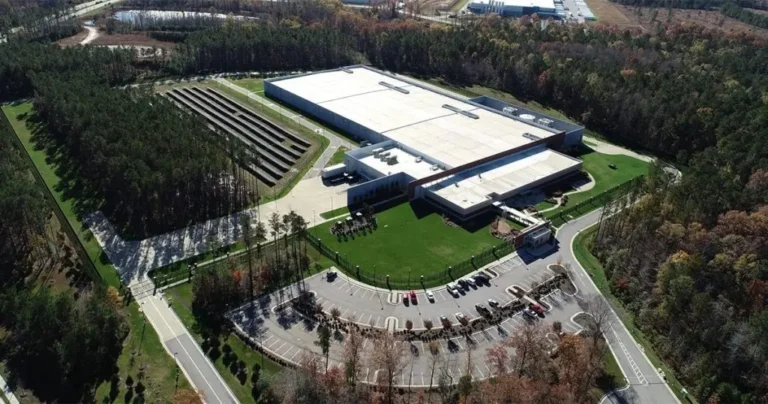





Bitfarms’ High-Stakes Pivot: Can a Bitcoin Miner Become an AI Infrastructure Giant?
In the volatile world of cryptocurrency mining—where fortunes rise and fall with the price of Bitcoin—one company is betting on a dramatic reinvention. Bitfarms Ltd., a Toronto-based miner with sprawling operations across the Americas, is quietly repositioning itself as a high-performance computing (HPC) and artificial intelligence (AI) host.
The stakes couldn’t be higher. The firm’s pivot comes as Bitcoin mining margins tighten post-halving and as hyperscalers scramble to secure energy-hungry data center space. A viral thread on X by user @ilzmcfly, an accountant-turned-investor, recently laid out a tantalizing bull case: if Bitfarms fully leverages its 1.3 gigawatt (GW) energy pipeline for AI contracts, its shares could soar to $73.52—more than 20x today’s ~$3.20 level.
But is that blue-sky scenario realistic, or just another hype cycle in a sector notorious for boom-and-bust swings?
The Roots: Bitfarms’ Bitcoin Legacy
Founded in 2017, Bitfarms built its brand on the brutal efficiency of Bitcoin mining. By late 2024, it operated 324 megawatts (MW) across Canada, the U.S., Paraguay, and Argentina, producing 2,914 Bitcoin that year. That scale gave it a hashrate of 12.8 exahashes per second (EH/s), up 97% year-over-year, while improving energy efficiency 40% to 21 watts per terahash.
The April 2024 halving slashed rewards, but Bitfarms still rode Bitcoin’s rally—trading near $114,000 in September 2025—to an 87% revenue jump in Q2 2025, hitting $78 million. Mining remains its cash cow, a “low-cost bridge financing,” in CEO Ben Gagnon’s words, for bigger ambitions.
A Strategic Recast Under New Leadership
Gagnon, who became CEO in 2024 after fending off a hostile bid from rival Riot Platforms, has shifted Bitfarms’ center of gravity south. Over 80% of its 1.3 GW energy pipeline now sits in the U.S., in data center hotbeds like Pennsylvania and Washington state. Deals tell the story:
-
Acquisition of Stronghold Digital Mining (closing Q1 2025).
-
Sale of Paraguay site to Hive Digital for $85 million.
-
Conversion to U.S. GAAP and a new New York executive office, prepping for index inclusion.
Bitfarms is no longer just a miner—it’s setting up as a U.S.-centric infrastructure company.
The AI Pivot: From Hashes to Hyperscalers
The driver is AI’s voracious appetite for compute. Training frontier models like GPT-class systems devours power, straining traditional data centers. McKinsey estimates U.S. data center demand will double to 35 GW by 2030; globally, AI-related compute could require $6.7 trillion in new investment.
Bitcoin miners are unlikely heroes in this story. They already run industrial-scale power and cooling setups with low-cost, often renewable energy contracts. Bitfarms’ Panther Creek site in Pennsylvania, developed with T5 Data Centers, is emblematic: proximate to major fiber networks and surrounded by hyperscaler investments, it’s primed for AI hosting. Its 20 MW Washington state site, near clients like Exxon and JPMorgan, adds another foothold.
Crucially, Bitfarms has halted new miner purchases. Instead, it is securing HPC capacity: 50 MW for 2026 and 300 MW by 2027, part of its 1.3 GW pipeline. “Our North American energy portfolio positions Bitfarms to be a leader in HPC and AI infrastructure,” Gagnon says.
Valuations: From $3 to $73?
The bull case is seductive. If Bitfarms signs long-term contracts across its pipeline at terms similar to TeraWulf’s August 2025 Fluidstack deal ($3.7B over 10 years for 200+ MW), revenue could hit $2.7 billion annually. At 85% margins and a premium AI multiple, that math takes shares to ~$73.
The base case is more modest: securing 200 MW yields ~$370M AI revenue, added to ~$200M from mining—enough to re-rate shares to $10–18. The bear case, if AI fizzles, leaves Bitfarms a miner valued at $2.50–4.00.
Analysts are split. H.C. Wainwright argues Bitfarms trades at just $25M per EH/s versus peers at $85M, implying undervaluation. Clear Street, more cautious, pegs it at $6, citing execution risks.
The Risks: Power, Politics, and Hype
Execution risk looms large. Winning hyperscaler contracts is a knife fight. Regulatory hurdles, especially in Quebec, complicate expansion. Energy costs could climb as demand surges, and sustainability pressures will intensify—McKinsey warns data centers may soon consume power equivalent to 80,000 households apiece.
The Bitcoin bridge is also double-edged: if crypto markets crash, the cash flow buffer shrinks just as AI investments peak.
Competitors in Motion
Bitfarms isn’t alone.
-
TeraWulf landed Fluidstack (with Google as investor) and expanded to 360 MW.
-
Cipher Mining is blending hydro-Bitcoin with AI workloads.
-
Iris Energy and Core Scientific stocks jumped on AI pivots, with miners outperforming Bitcoin itself in September 2025.
By 2027, analysts project 20% of miner capacity could be devoted to AI workloads. Bitfarms’ advantage: sheer scale and strategically located U.S. assets.
The Road Ahead
Bitfarms embodies the industry’s metamorphosis: from miners of digital gold to landlords of the AI age. Its balance sheet, energy pipeline, and leadership all tilt toward reinvention. The bull case isn’t fantasy—but neither is failure.
As one X user put it: “Bitfarms has the next best location for AI HPC in the U.S.” If true, today’s $3 stock may be tomorrow’s $73. But in markets this volatile, the line between visionary pivot and cautionary tale is vanishingly thin.
Trump’s Tariffs and UK Sanctions Squeeze India’s Economy Amid Global Trade Turmoil
The ripple effects of former President Donald Trump’s aggressive trade policies and the UK’s latest sanctions on Russian oil…
The NFL’s Two Faces on Health: Teaching CPR While Players Bleed from Preventable Hits
As the league rolls out glossy safety campaigns, the product on the field tells a tougher story…